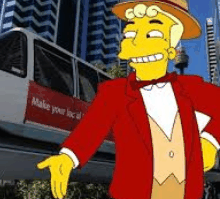
While driving home from the swimming pool on Tuesday night, I listened to an ABC radio interview featuring former leader of the National Party, Tim Fischer, alongside Beyond Zero Emissions’ Gerard Drewe, lamenting how the proposed second Sydney airport would lessen the prospect of building a high speed rail line linking the East Coast cities, along with their justifications as to why high speed rail is warranted.
Below is an extract of the interview transcript:
Advocates of high speed rail had their hopes boosted by the previous Labor government, though, which established a series of scoping studies into the viability of such a network. But those studies assumed Sydney would continue to only have one major airport, increasing demand for an alternative means of travelling to Melbourne, Canberra and Brisbane.
So is it the end of the line for high speed rail?
GERARD FREWE: Yeah, well that’s a good question. These two proposals would certainly be treading on each others’ turf in terms of funding…
Last year, a Commonwealth report concluded it would cost more than $100 billion to build.
Gerard Drewe believes competition from a second Sydney airport doesn’t kill off high speed rail, but it does make it harder to achieve.
GERARD DREWE: I think that the case will still be around for a high speed rail. It’s just going to be made more challenging if we commit a lot of funding and a lot of political investment into a second Sydney airport.
NICK GRIMM: Rusted-on advocates of high speed rail like former deputy prime minister Tim Fischer refuse to give up the dream of travelling between major cities on trains rocketing along at hundreds of kilometres per hour.
In fact, Mr Fischer says, Australia needs those trains now more than ever.
TIM FISCHER: It should not be a case of either/or, it should be a case, effectively, of both. We need a second Sydney airport, we need rail, high speed rail.
…there’s ways of dovetailing and making this work, and frankly, on our busiest corridor, east coast, we will need both, and we will need both within the first half of the 21st century…
I am convinced Melbourne-Sydney, less than three hours by rail, no matter what the airlines do, would operationally break even from year two… as we celebrate this year the 50th anniversary of the Shinkansen: zero fatalities Japan operation from Tokyo, Nagoya to Osaka; a sharp reminder that we’re 50 years behind the eight ball with high speed rail in this country. We need to get moving.
In my view, advocates of High Speed rail are delusional, with the project likely to be one giant waste of taxpayer funds, with ongoing operational subsidies as long as the eye can see.
The Stage 2 feasibility study, which was completed in April 2013 by the High Speed Rail Advisory Group (the body tasked by the former Labor Government with overseeing the eventual building of a high speed rail line) found a high-speed rail link along the East Coast would cost taxpayers $114 billion (in 2012 dollars) and take 45 years to complete.
The $114 billion price tag would represent a cost of nearly $5,000 per man women or child, or nearly $9,800 per employed person – a ginormous burden on the public. And although Australia’s population will continue to grow over time, it will unlikely be anywhere near big enough to make such a huge investment viable.
The comparison with Japan by Tim Fischer is also ridiculous. Japan’s population is around five times bigger than Australia’s and it is one of the most densely populated nations on earth, with a population density around three times that of Europe and more than ten times more densely populated than the US.
Second, for $114 billion, Australia could probably fix-up most of the infrastructure in Australia’s cities and major towns, and/or build world class freight infrastructure, providing a much bigger productivity pay-off in the process, whilst also improving living standards for a wider share of the population.
Finally, an investment of this size that services only a small portion of the country is highly inequitable. Why should residents in Adelaide, Northern Queensland, Darwin, Alice Springs, Hobart, Perth, or a range of other regional towns be called upon to fund (via their taxes) a project that provides no benefit to them and minimal (if any) productivity benefit to the nation?
Ultimately, high speed rail smells like another one of those dubious big ticket pet projects that politicians and greenies love, but leaves taxpayers and the economy significantly worse-off.
It is exactly the opposite of what Australia needs if it is to rebuild its competitiveness, and the idea should be laid to rest once and for all.

